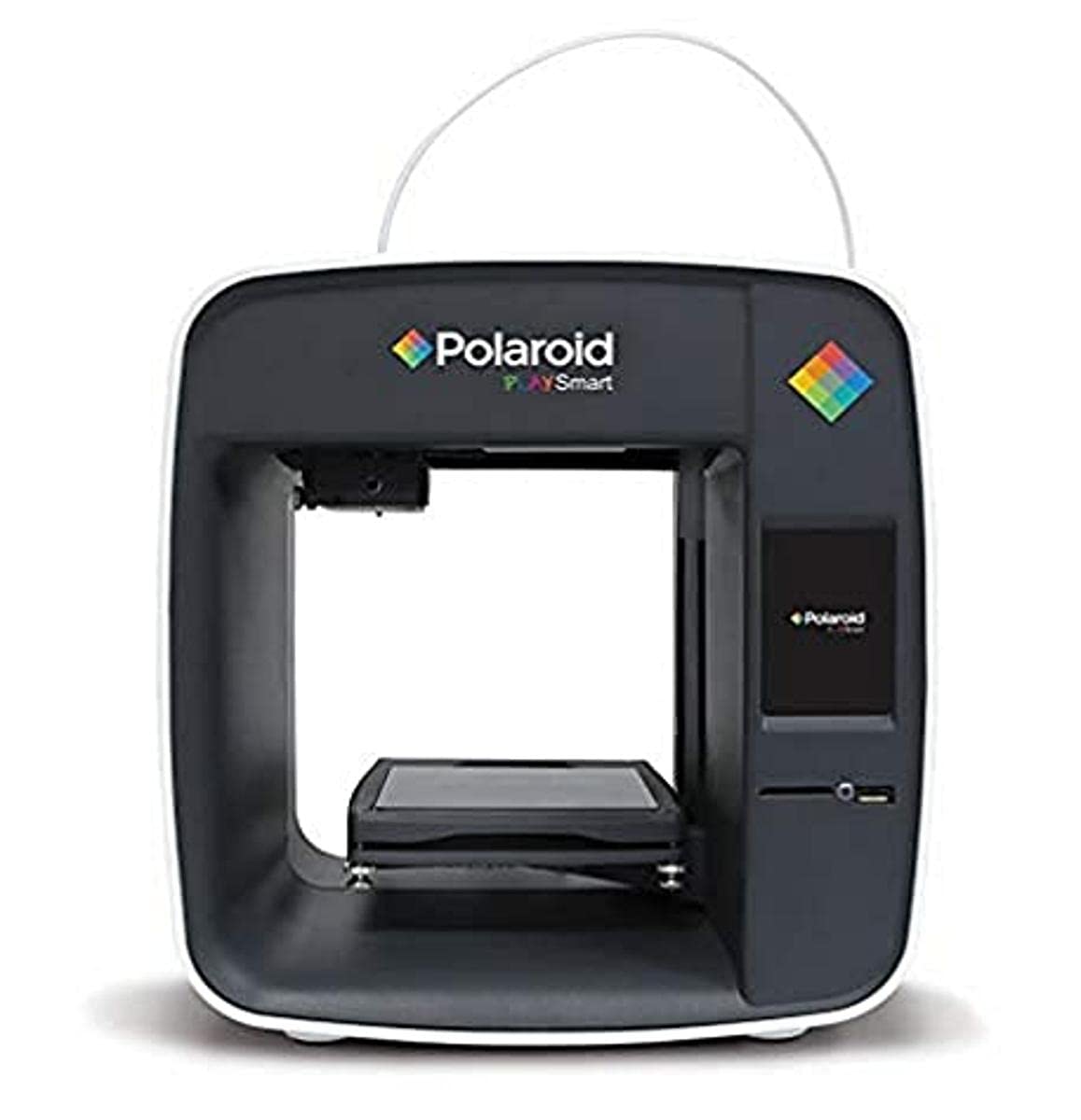3D printing has transitioned from a niche technology to a more accessible hobby, with printers now available for home use. The Polaroid PlaySmart 3D printer aims to make this technology even more approachable, particularly for beginners and families.
With its focus on ease of use and affordability, it presents an intriguing option for those looking to explore the world of additive manufacturing without a steep learning curve. This review examines the key features, performance, and target audience of the Polaroid PlaySmart, providing insight into its capabilities and limitations.
Exploring the Polaroid PlaySmart 3D Printer
What is the Polaroid PlaySmart 3D Printer?
The Polaroid PlaySmart 3D Printer is designed for home use, especially for beginners and families. It’s known for its ease of use and compact design. It uses Fused Deposition Modeling (FDM) technology, which melts plastic filament and builds objects layer by layer. It aims to bring 3D printing to a broader audience with its user-friendly interface and relatively affordable price point.
Key Features and Specifications
Let’s look at some of the key features of the Polaroid PlaySmart:
- Print Volume: Typically offers a smaller build volume suitable for smaller projects.
- Filament Compatibility: Usually compatible with PLA filament, a common and easy-to-use type of 3D printing plastic.
- Connectivity: Often connects via Wi-Fi or USB, allowing for easy file transfer.
- Software: Often uses simplified slicing software designed for beginners.
- Safety Features: Some models include features like enclosed print areas or non-heated print beds for added safety, particularly for use around children.
Setting Up the Polaroid PlaySmart
Setting up the PlaySmart is generally quite simple:
- Unboxing and Assembly: The printer usually comes mostly assembled. You may need to attach a few parts.
- Loading Filament: Loading the filament is typically a straightforward process, with clear instructions provided.
- Connecting to Wi-Fi or USB: Connect the printer to your computer or network using the appropriate method.
- Installing Software: Install the provided slicing software on your computer.
- First Print: The printer often comes with pre-loaded test prints to get you started quickly.
Print Quality and Performance
The PlaySmart is designed for everyday printing rather than high-precision professional prints. Expect decent quality for basic models, toys, and household items. More complex designs or very fine details may be challenging. Print speed is adequate for its target market.
Software and User Interface
The software is designed to be simple and intuitive. It usually includes basic features for preparing 3D models for printing, such as scaling, rotating, and adding supports. This simplicity makes it a good choice for beginners who are new to 3D printing software.
Pros and Cons
Here’s a quick summary of the PlaySmart’s advantages and disadvantages:
| Pros | Cons |
|---|---|
| Easy to use, ideal for beginners | Smaller build volume limits project size |
| Compact and lightweight | Print quality is suitable for basic prints only |
| Affordable price point | Limited filament compatibility (usually just PLA) |
| Often includes safety features | May lack advanced features found in more expensive printers |
Who is the Polaroid PlaySmart For?
This printer is a good choice for:
- Families who want to introduce their children to 3D printing.
- Beginners who are new to the technology.
- Casual users who want to print simple models and toys.
It’s probably not ideal for professionals, designers, or those who need high-precision prints.
Overview
This article discusses general topics related to testing and reviewing technology products. For many years, the writer has been part of a team that tests various devices and components. They focus on items like 3D printers, screens, and storage options. Their work also includes looking at apps for iPhones and iPads, and they sometimes explore cameras and laptops. Beyond tech gadgets, this person writes articles on topics such as space science and photography. These articles appear in well-known tech publications, offering insights into different areas. The information aims to help readers understand and choose the right products for their needs.
Commonly Asked Questions about the Polaroid PlaySmart 3D Printer
Compatible Software for the Polaroid PlaySmart 3D Printer
The Polaroid PlaySmart 3D Printer works well with several types of software. Users often pair it with slicing software that reads .STL files to prepare models for printing. This software helps convert digital designs into something the printer can understand.
User Insights on Amazon About the Polaroid PlaySmart 3D Printer
Reviews on Amazon highlight mixed user experiences. Some appreciate its compact design and ease of use, while others mention its limited build size. It’s often considered suitable for beginners due to its straightforward setup.
Dedicated App Features for the Polaroid PlaySmart 3D Printer
The Polaroid PlaySmart has a specific app tailored to enhance its functionality. This app allows users to control the printer remotely, manage print jobs, and even purchase additional printing supplies. It offers a user-friendly interface for people new to 3D printing.
Filament Options for Use with the Polaroid PlaySmart 3D Printer
This printer supports various types of filaments. Common choices include PLA and ABS, which are widely used due to their reliability and ease of use. The filament type can affect the quality and durability of the final print, so users should choose according to their project needs.
Printing Size Capability of the Polaroid PlaySmart 3D Printer
The Polaroid PlaySmart 3D Printer has a relatively small print area. It is ideal for smaller projects where large prints aren’t necessary. The exact dimensions allow for detailed work on compact items but may not suffice for larger designs.
Accuracy Level of the Polaroid PlaySmart 3D Printer Compared to Other Printers
When looking at print accuracy, the Polaroid PlaySmart performs decently among budget-friendly options. It may not match the precision of high-end models. However, for its price range, it delivers satisfactory results for most simple tasks.







